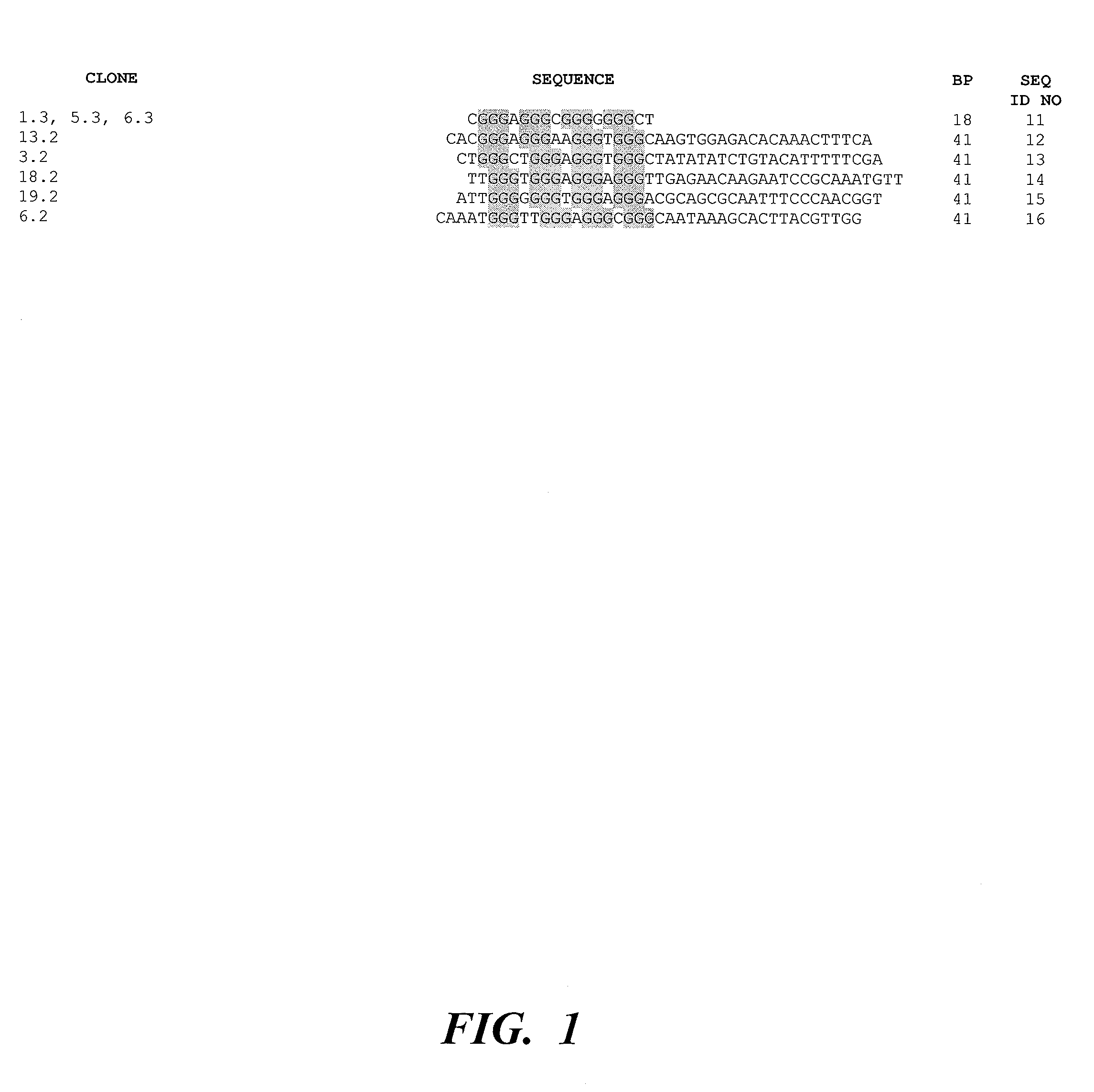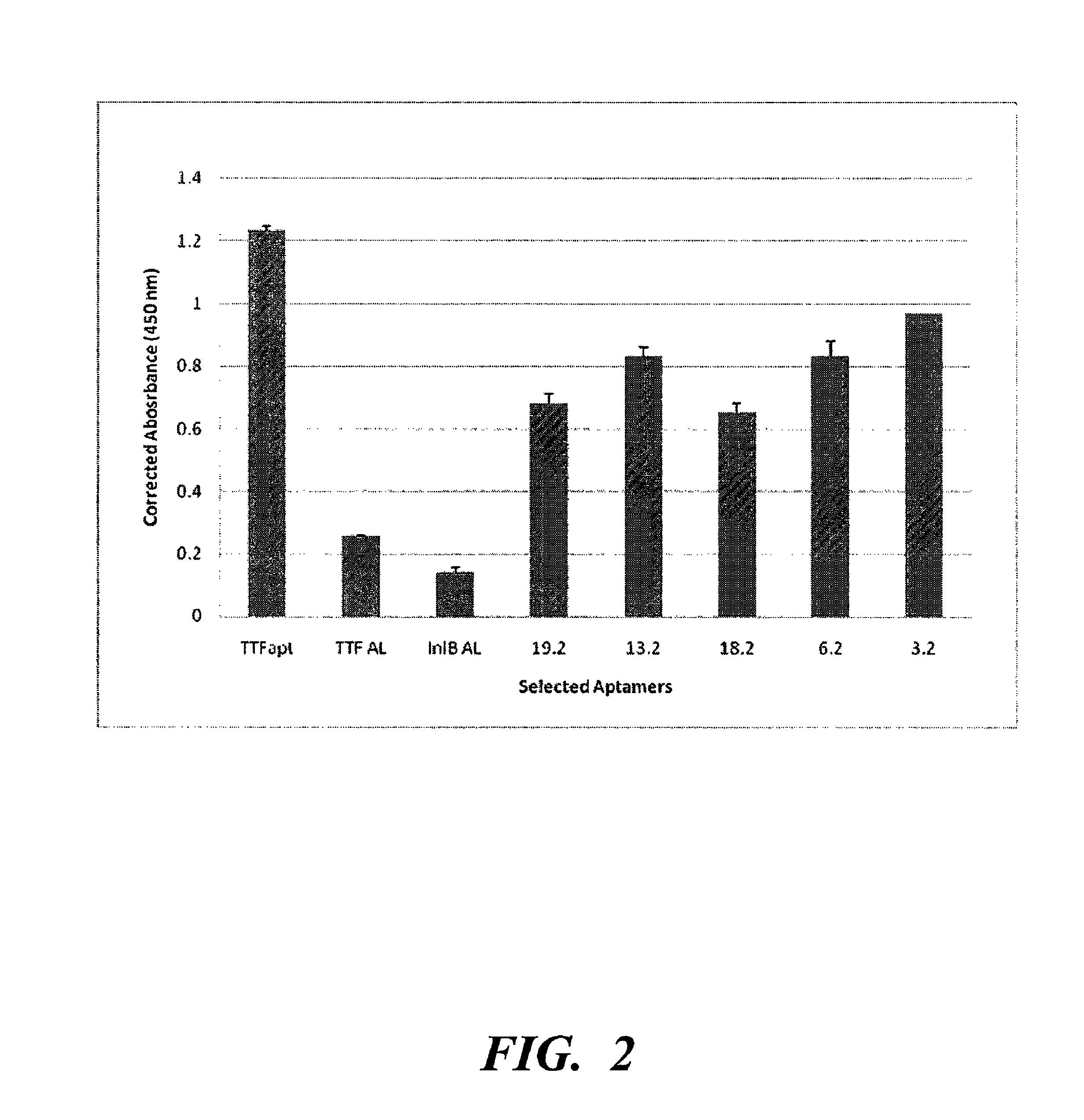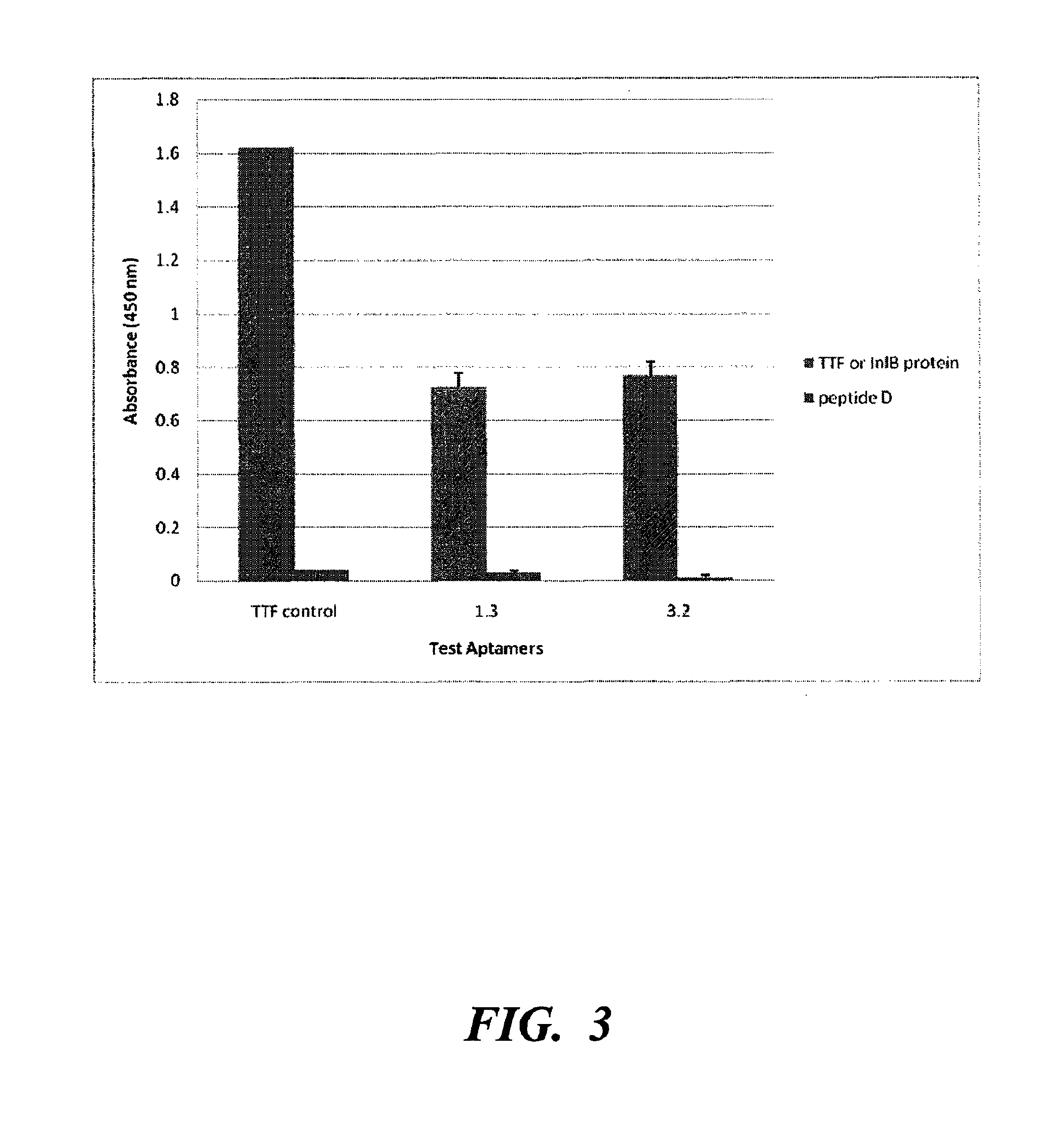Nucleic acid ligands capable of binding to internalin B or internalin A
a technology of nucleic acid ligands and internalins, applied in the field of new nucleic acid ligands, can solve the problems of complicated assay sensitivity, limited widespread use of molecular methods in general, and limitations of pcr-based methods, so as to reduce listeria monocytogenes infection
- Summary
- Abstract
- Description
- Claims
- Application Information
AI Technical Summary
Benefits of technology
Problems solved by technology
Method used
Image
Examples
example 1
[0105]A patient having clinical indications of listeriosis is intravenously administered a dose of one of the aptamers shown in FIG. 1 or FIG. 7 in a dose of 5 mg / kg per day for 15 days. This may be administered in a single dose, or may be administered as a number of smaller doses over a 24-hour period: for example, three smaller doses at eight-hour intervals. Following treatment, a significant proportion of the inlB or inlA protein is bound by the aptamer and the listeriosis infection is ameliorated.
example 2
[0106]A patient at risk for developing listeriosis (for example as a result of consuming food known to be contaminated with Listeria monocytogenes) is intravenously administered a dose of one of the aptamers shown in FIG. 1 or FIG. 7 in a dose of 5 mg / kg per day for 15 days. This may be administered in a single dose, or may be administered as a number of smaller doses over a 24-hour period: for example, three smaller doses at eight-hour intervals. Following treatment, a significant proportion of the inlB or inlA protein is bound by the aptamer.
PUM
| Property | Measurement | Unit |
|---|---|---|
| concentration | aaaaa | aaaaa |
| pH | aaaaa | aaaaa |
| pH | aaaaa | aaaaa |
Abstract
Description
Claims
Application Information
 Login to View More
Login to View More - R&D
- Intellectual Property
- Life Sciences
- Materials
- Tech Scout
- Unparalleled Data Quality
- Higher Quality Content
- 60% Fewer Hallucinations
Browse by: Latest US Patents, China's latest patents, Technical Efficacy Thesaurus, Application Domain, Technology Topic, Popular Technical Reports.
© 2025 PatSnap. All rights reserved.Legal|Privacy policy|Modern Slavery Act Transparency Statement|Sitemap|About US| Contact US: help@patsnap.com



